
CFD Simulation of a Racecar in a Wind Tunnel
Having recently built a Computational Fluid Dynamics (CFD) simulation of the Honda Wind Tunnel at Imperial College, it seemed only fitting to actually use it to perform a virtual test on a scale model. Clearly, given the wind tunnel's close association with motor racing, the test model had to be a racecar.
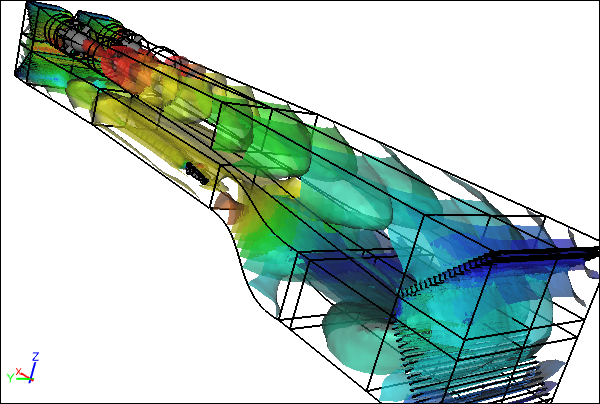 CFD Simulation of a Racecar in a Wind TunnelVelocity magnitude iso-surfaces
CFD Simulation of a Racecar in a Wind TunnelVelocity magnitude iso-surfaces
Racecar Model
It just so happened that I had a Formula 1/Indy car open wheel model from a previous CFD study. I first scaled the racecar to be 40% of its original full size to match the maximum size specification for the wind tunnel. If the model was any larger then the results were likely to be compromised by the blockage effect of the model in the test section. I also added a new internal duct to the car to route air through a radiator which I represented as a porous volume. I only had to model half the car due to its symmetry and for it to be compatible with the symmetric virtual wind tunnel.
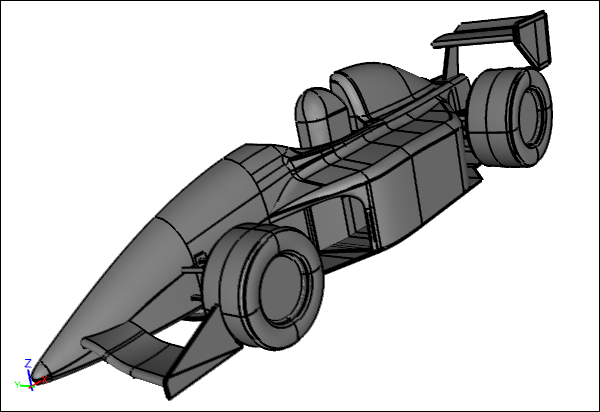 Open Wheel RacecarSymmetric half model
Open Wheel RacecarSymmetric half model
Test Section
Given the modular multi-volume design of the virtual wind tunnel I can switch out various sections and insert new ones. In the case of this racecar study I constructed a new test section with the racecar embedded within it, and then I connected the new test section to the rest of the virtual wind tunnel.
Within the test section I replicated the moving road in the real wind tunnel with a linear velocity assigned to the ground locally around the racecar. To simulate the rotating wheels in contact with the moving road I assigned an angular velocity to both wheels of the half car.
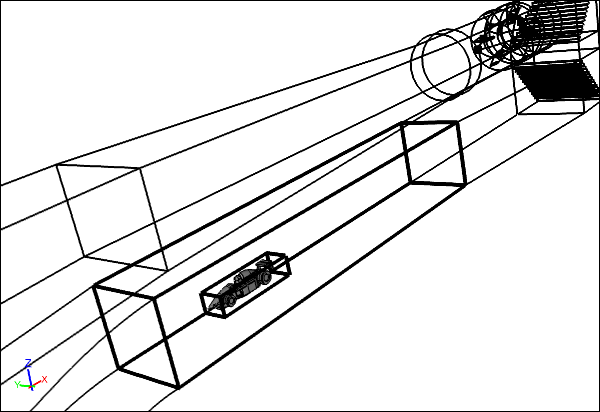 Wind Tunnel Test Section with Embedded Racecar
Wind Tunnel Test Section with Embedded Racecar
Operating Conditions
The maximum velocity of the air in the real wind tunnel is of the order of 30-40 m/s, so I adjusted the rotational speed of the wind tunnel fan to be 6000 rpm, which resulted in a mean air velocity at the test section entrance of 29 m/s.
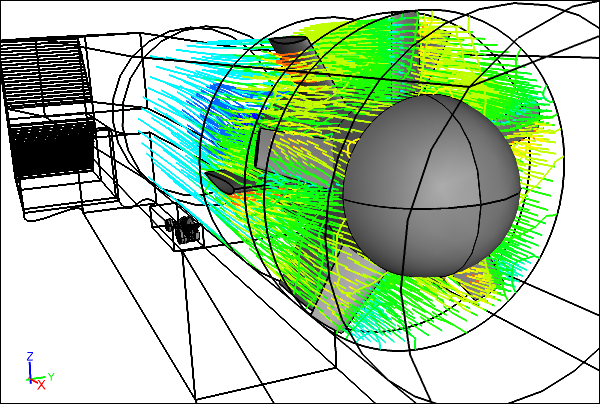 Airflow Through the Wind Tunnel FanStreamlines colored by velocity magnitude
Airflow Through the Wind Tunnel FanStreamlines colored by velocity magnitude
Results
Using force monitors, just like in the real wind tunnel, the drag was measured at 27 N and the downforce was 18 N.
With CFD we can visualize the entire flow field around the racecar as shown below.
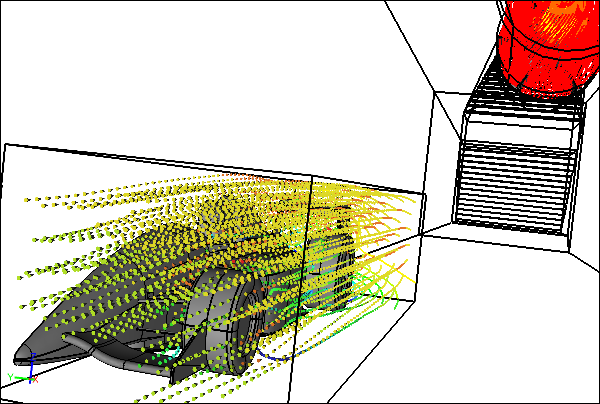 Airflow Around the Racecar in the Wind TunnelArrows following streamlines colored by velocity magnitude
Airflow Around the Racecar in the Wind TunnelArrows following streamlines colored by velocity magnitude
Next
How do the wind tunnel results compare with an equivalent simulation performed in free air? Now that's a topic worthy of another post me thinks, so stay tuned.
Recent blog posts
- CFD Simulates Distant Past
- Background on the Caedium v6.0 Release
- Long-Necked Dinosaurs Succumb To CFD
- CFD Provides Insight Into Mystery Fossils
- Wind Turbine Design According to Insects
- Runners Discover Drafting
- Wind Tunnel and CFD Reveal Best Cycling Tuck
- Active Aerodynamics on the Lamborghini Huracán Performante
- Fluidic Logic
- Stonehenge Vortex Revealed as April Fools' Day Distortion Field
